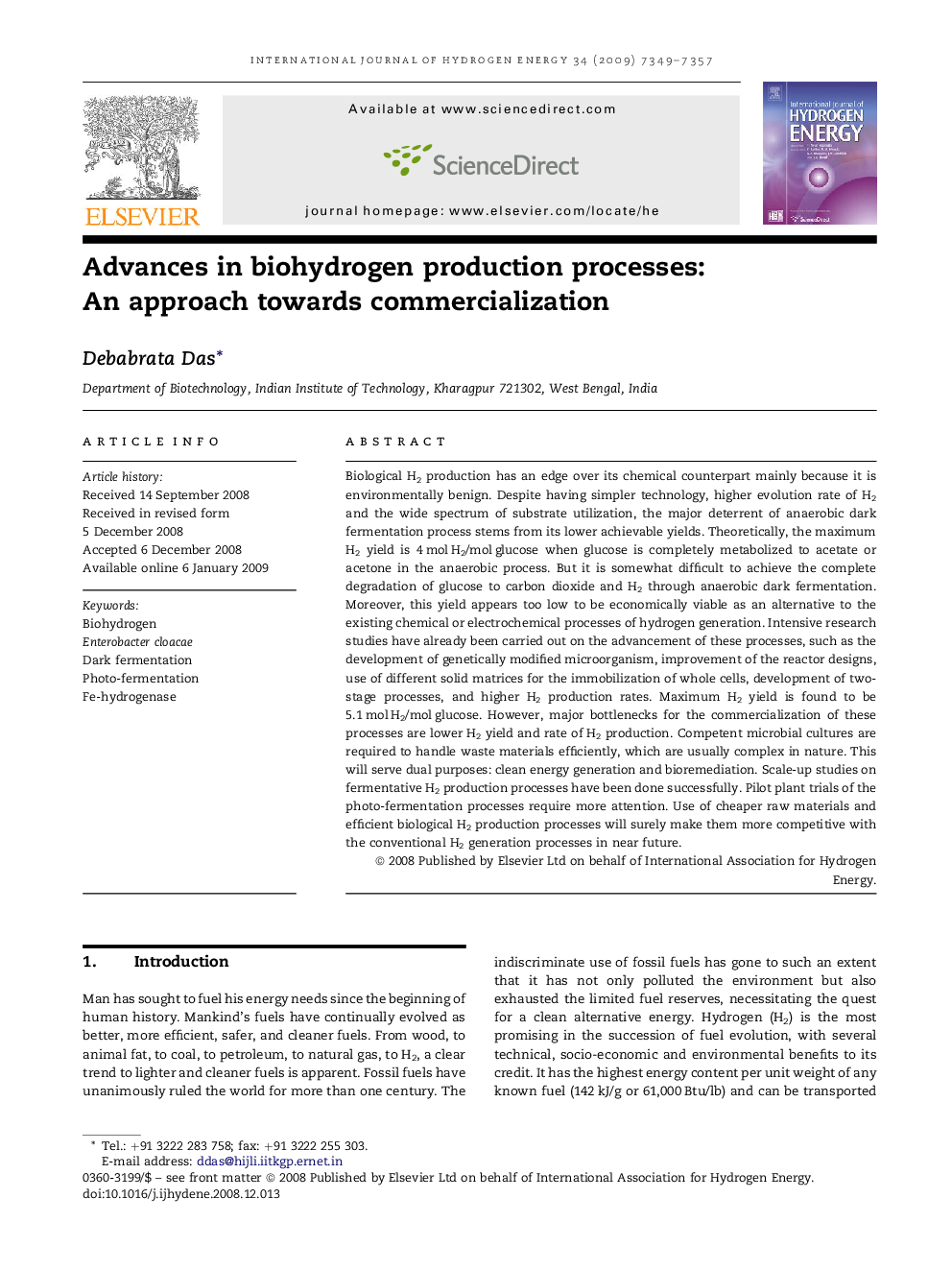| Article ID | Journal | Published Year | Pages | File Type |
|---|---|---|---|---|
| 1281125 | International Journal of Hydrogen Energy | 2009 | 9 Pages |
Biological H2 production has an edge over its chemical counterpart mainly because it is environmentally benign. Despite having simpler technology, higher evolution rate of H2 and the wide spectrum of substrate utilization, the major deterrent of anaerobic dark fermentation process stems from its lower achievable yields. Theoretically, the maximum H2 yield is 4 mol H2/mol glucose when glucose is completely metabolized to acetate or acetone in the anaerobic process. But it is somewhat difficult to achieve the complete degradation of glucose to carbon dioxide and H2 through anaerobic dark fermentation. Moreover, this yield appears too low to be economically viable as an alternative to the existing chemical or electrochemical processes of hydrogen generation. Intensive research studies have already been carried out on the advancement of these processes, such as the development of genetically modified microorganism, improvement of the reactor designs, use of different solid matrices for the immobilization of whole cells, development of two-stage processes, and higher H2 production rates. Maximum H2 yield is found to be 5.1 mol H2/mol glucose. However, major bottlenecks for the commercialization of these processes are lower H2 yield and rate of H2 production. Competent microbial cultures are required to handle waste materials efficiently, which are usually complex in nature. This will serve dual purposes: clean energy generation and bioremediation. Scale-up studies on fermentative H2 production processes have been done successfully. Pilot plant trials of the photo-fermentation processes require more attention. Use of cheaper raw materials and efficient biological H2 production processes will surely make them more competitive with the conventional H2 generation processes in near future.
